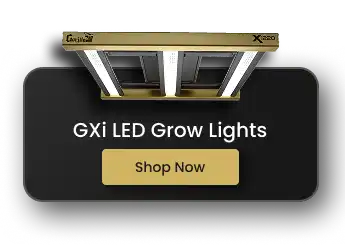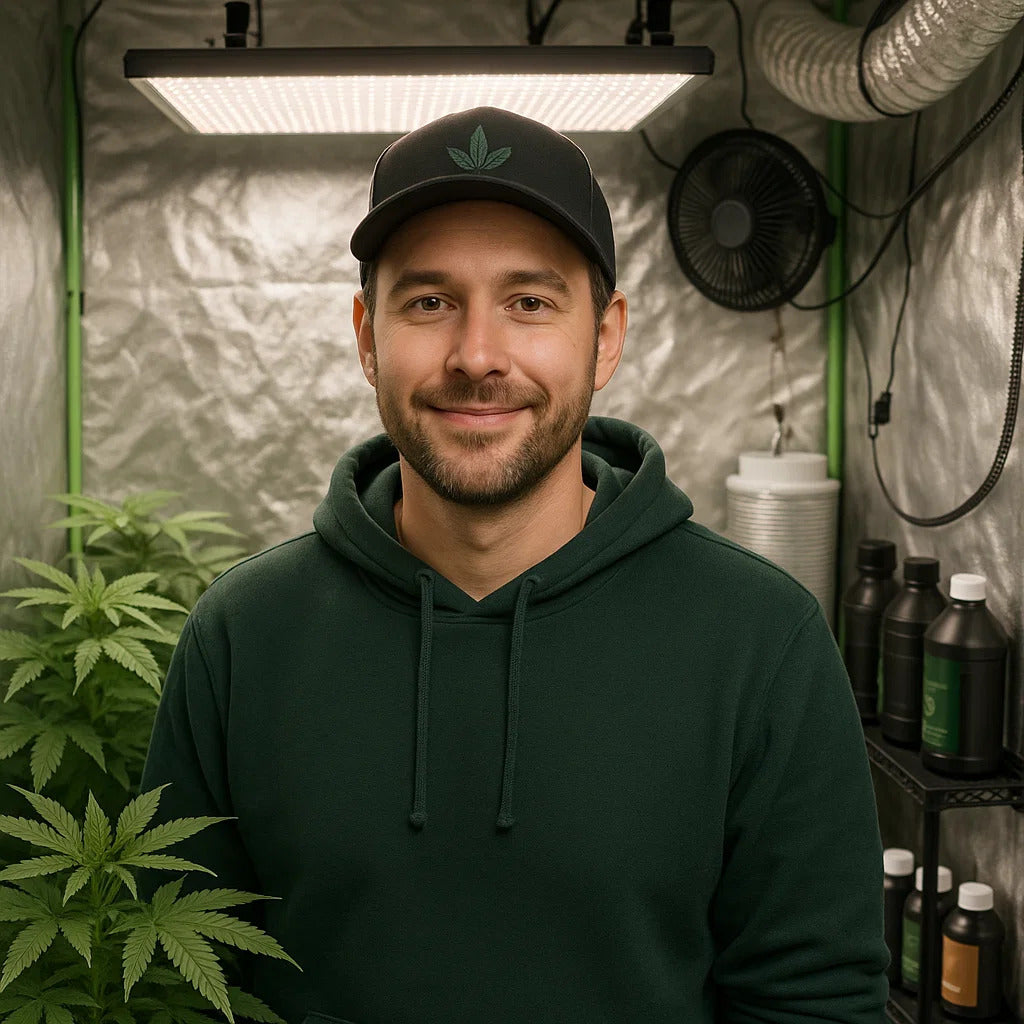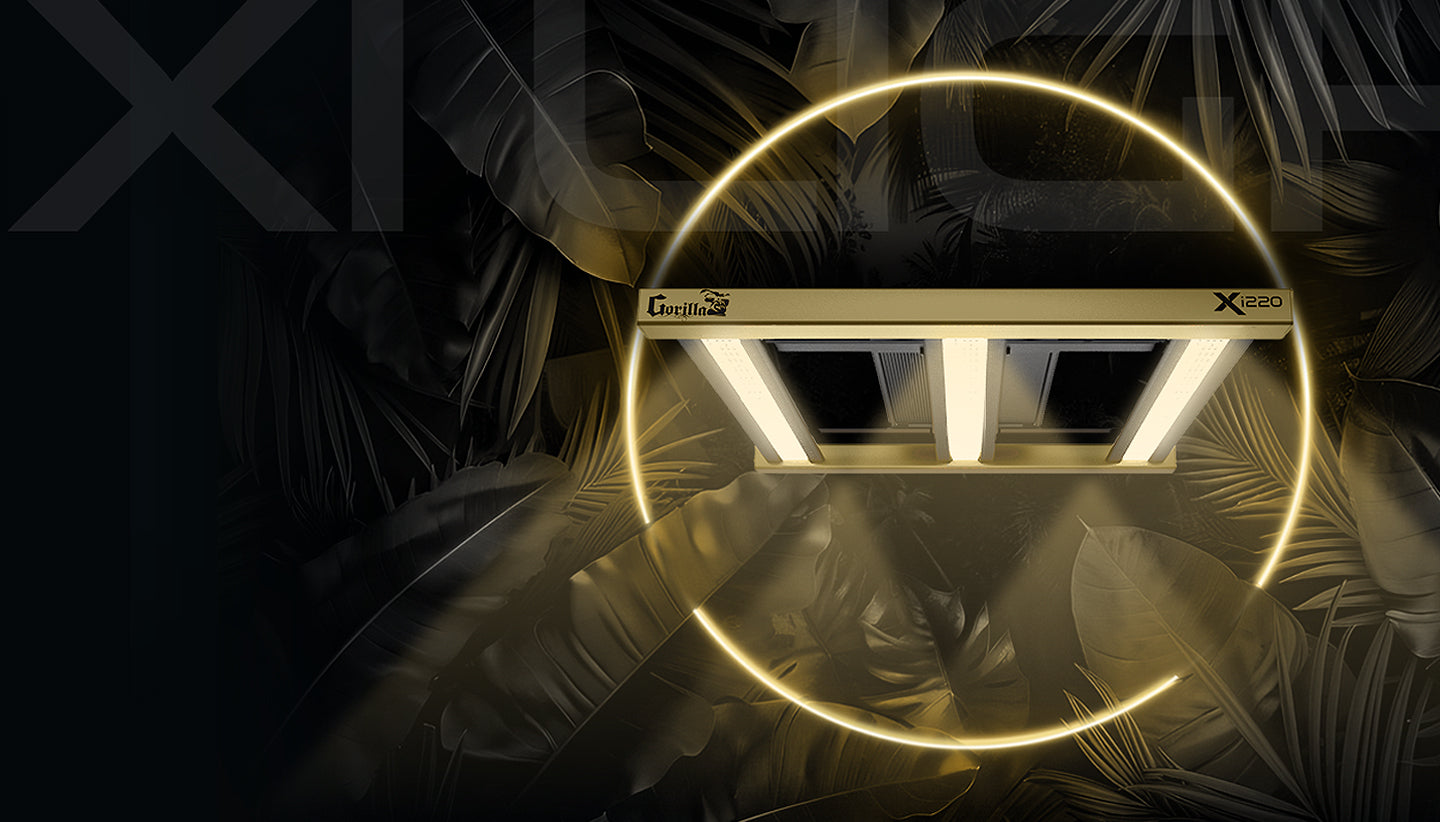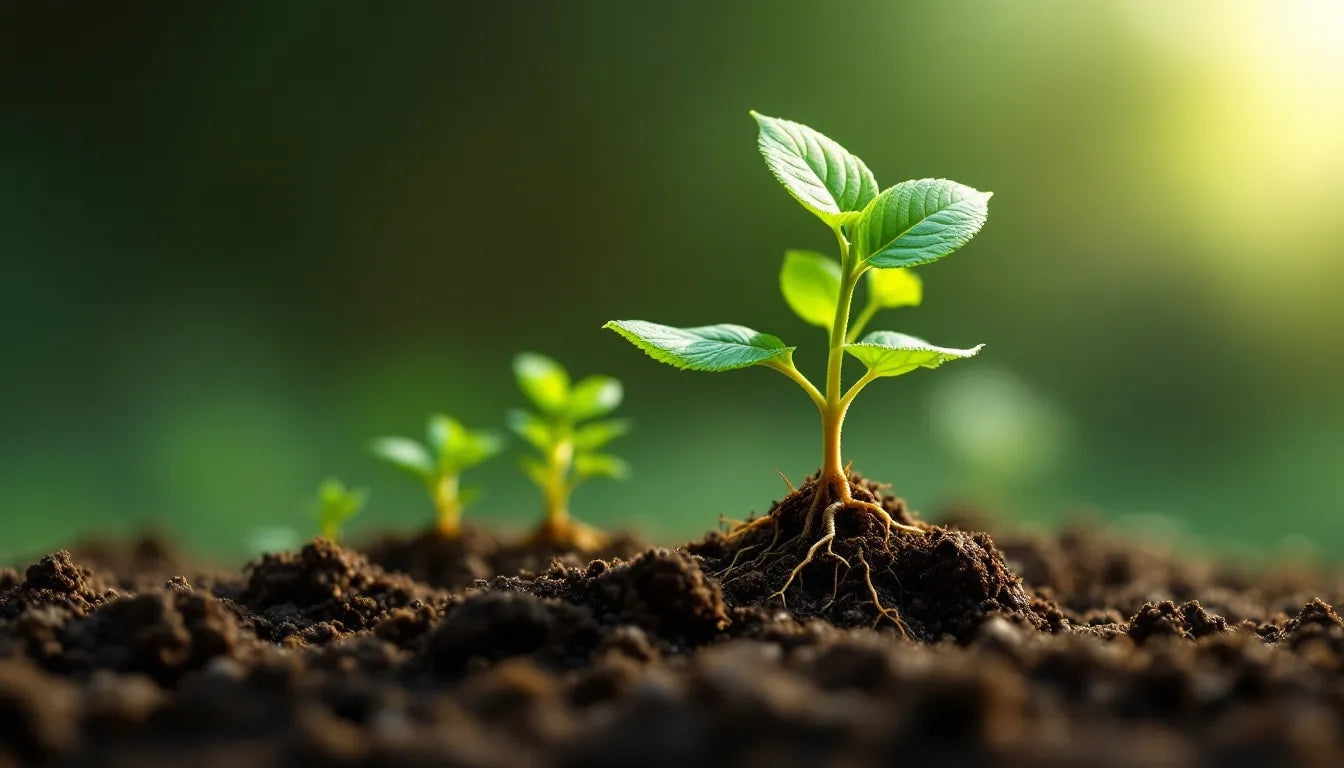
Best Plant Grow Lights: The Complete Guide to Plants LED Lighting
Quick Answer: The best LED grow lights for plants feature full-spectrum capability, adjustable intensity, UV/IR channels, and proper wattage for your space. Top choices include lights with 30-50 watts per square foot coverage, tri-channel spectrum control, and smartphone app integration for precise environmental management.
Choosing the right grow lights for plant cultivation makes the difference between mediocre harvests and premium-quality buds with maximum potency and yield. With plant lighting technology advancing rapidly, today's LED systems offer unprecedented control over plant development, resin production, and harvest timing.
This comprehensive guide reveals the best plant grow lights available today, compares leading technologies, and provides expert recommendations for every budget and growing situation.
Why LED Grow Lights Are Superior for Plant Cultivation
Modern LED technology has revolutionized plant growing by providing precise spectrum control, energy efficiency, and heat management that traditional lighting simply cannot match. Understanding these advantages helps you make informed decisions about your lighting investment.
Spectrum Precision for Plant Development Plants respond dramatically to different light wavelengths throughout their lifecycle. LED grow lights offer precise control over blue light for vegetative growth, red light for flowering, and specialized UV/IR wavelengths that enhance resin production and terpene development.
Traditional HID lights produce broad spectrum output that wastes energy on wavelengths plants don't use efficiently. Quality LED systems target specific wavelengths that drive photosynthesis, resulting in faster growth rates and higher cannabinoid production.
Energy Efficiency and Operating Costs LED grow lights consume 40-60% less electricity than equivalent HID systems while producing similar or better results. This efficiency translates to significant savings on electricity bills, especially important for year-round plant cultivation.
The reduced energy consumption also generates less heat, reducing cooling requirements and making environmental control easier and more cost-effective throughout the growing cycle.
Heat Management Benefits Excessive heat from lighting systems stresses plants, reduces resin production, and can damage delicate trichomes during flowering. LED systems run significantly cooler, allowing closer placement to plants for increased light intensity without heat stress.
This improved heat management enables better environmental control, reduced risk of plant stress, and more consistent growing conditions that lead to higher quality plants.
Longevity and Reliability Quality LED grow lights last 50,000+ hours compared to 10,000-20,000 hours for HID bulbs. This longevity means fewer replacements, reduced maintenance costs, and more consistent light output throughout the system's lifetime.

Top Plant LED Grow Light Features to Look For
Not all LED grow lights are created equal. Understanding essential features helps you identify systems that will deliver professional-quality results for plant cultivation.
Full-Spectrum Capability with Targeted Channels The best plant LED lights feature multiple controllable channels that allow fine-tuning for different growth stages. Look for systems with dedicated blue, red, and UV/IR channels that can be adjusted independently.
Gorilla GXi LED grow lights feature tri-channel spectrum control with presets optimized for each plant growth stage, plus full customization capability for advanced growers who want complete control over their light recipes.
Smartphone App Integration Modern LED systems should integrate with smartphone apps for remote monitoring and control. This technology allows you to adjust lighting schedules, monitor energy consumption, and receive alerts about system status from anywhere.
The GXi ecosystem connects directly to the Gorilla Grow Tent App, enabling advanced features like sunrise/sunset technology, automated environmental protection, and custom light schedules without additional controllers.
UV and IR Enhancement Technologies Specialized UV and IR wavelengths dramatically impact plant quality and potency. UV light triggers stress responses that increase resin production, while IR light improves flower density and overall yield weight.
Look for lights with dedicated UV/IR channels that can be programmed for specific timing during the flowering stage to maximize trichome development and terpene production.
Proper Wattage and Coverage Plants require high light intensity for optimal development. Calculate 30-50 watts per square foot of LED lighting for professional results, with higher wattages producing better yields in most situations.
Ensure your chosen light provides appropriate coverage for your grow space with uniform light distribution from center to edges of the growing area.
Best LED Grow Lights for Different Plant Growing Spaces
Growers need different lighting solutions based on their available space, plant count, and growing goals. Here are the top LED recommendations for each common setup size.
Best Lights for 2x2 Plant Growing Small spaces require concentrated power and precise control for maximum efficiency. The Xi220 LED Grow Light delivers 220 watts of targeted full-spectrum lighting perfect for 1-2 plants in compact spaces.
Key features for small grows:
- Concentrated power density for maximum intensity
- Tri-channel spectrum control for growth stage optimization
- Compact form factor fits tight spaces
- Smartphone app control for precise management
Optimal 3x3 Plant Lighting Medium-sized grows need balanced coverage and intensity. The Xi330 LED Grow Light provides 330 watts across 2'x3' to 3'x3' footprints, supporting 2-4 plants with professional-grade spectrum control.
Advanced features include:
- BudBooster IR technology for enhanced flower density
- TrichomeForce UV for maximum resin production
- Wireless intelligence with zero additional controllers needed
- Professional-grade presets calibrated by expert cultivators
Premium 4x4 Plant Cultivation Serious growers demand maximum performance and control. The Xi420 LED Grow Light delivers 420 watts optimized for 2'x4' to 3'x4' spaces, supporting 4-6 plants with championship-level results.
Professional advantages:
- Targeted full-spectrum engineered for maximum yield and potency
- Advanced IR/UV control for enhanced cannabinoid production
- Industry-first dual-channel IR/UV technology
- Northern California cultivator-tested spectrum optimization
Ultimate 5x5 Plant Setup Large-scale home cultivation requires the ultimate in power and precision. The Xi750 LED Grow Light commands 4'x4' to 5'x5' areas with 750 watts of uncompromising intensity and control.
Elite features include:
- Maximum genetic potential through intelligent spectrum control
- Fastest growing optimized blue spectrum for structural development
- Automated environmental protection during high heat conditions
- Pro-level light schedules with precision control capabilities

Plant-Specific Spectrum Requirements
Plants have unique lighting needs that differ from general plant cultivation. Understanding these specific requirements helps you optimize your lighting setup for maximum potency and yield.
Vegetative Stage Spectrum Optimization During vegetative growth, plants need blue-heavy spectrum to promote compact, bushy growth with tight node spacing. This foundation stage determines plant structure and ultimate yield potential.
Optimal vegetative spectrum:
- Blue light (400-500nm): 40-50% of total output for structural development
- Green light (500-600nm): 10-20% for canopy penetration
- Red light (600-700nm): 30-40% for balanced growth
- Photoperiod: 18/6 or 20/4 lighting schedule
Quality LED systems allow adjustment of these ratios to fine-tune plant development based on genetics and growing goals.
Flowering Stage Spectrum Enhancement Flowering plants require shifted spectrum emphasis toward red wavelengths while maintaining some blue for continued leaf function. This stage determines final flower quality, potency, and yield.
Flowering spectrum priorities:
- Blue light: Reduced to 20-30% for maintenance functions
- Red light (600-700nm): Increased to 50-60% for flower development
- Far-red (700-800nm): 5-10% for flower density enhancement
- UV-A (315-400nm): Strategic timing for resin production
- Photoperiod: 12/12 lighting schedule triggers flowering
UV Light for Resin Production Ultraviolet light triggers stress responses in plants that increase resin production and terpene development. However, UV timing and intensity must be carefully controlled to avoid plant damage.
UV implementation strategies:
- Introduce UV gradually during early flowering
- Limit UV exposure to 2-4 hours daily during peak resin development
- Monitor plants closely for stress signs
- Use dedicated UV channels for precise control
IR Light for Flower Enhancement Infrared wavelengths improve flower density and can enhance yield weight when used strategically during flowering. IR also helps with canopy penetration in dense plant structures.
IR optimization techniques:
- Apply IR during peak flowering for density enhancement
- Use morning/evening IR to simulate natural sunrise/sunset
- Coordinate IR with environmental controls for optimal results
Environmental Integration and Smart Controls
The best plant LED grow lights integrate seamlessly with environmental control systems to maintain optimal growing conditions automatically.
Temperature Management with LED Systems While LED lights run cooler than HID systems, they still affect grow room temperature. Smart LED systems coordinate with temperature sensors and ventilation to maintain optimal growing conditions.
Professional environmental monitoring enables automatic light dimming during heat spikes, preventing plant stress while maintaining necessary light levels for continued photosynthesis.
Humidity Coordination Light intensity affects plant transpiration rates, which impact humidity levels. Advanced LED systems adjust output based on humidity readings to maintain optimal VPD (Vapor Pressure Deficit) for plant development.
This integration ensures plants maintain proper moisture balance while receiving maximum beneficial light energy throughout all growth stages.
CO2 Enhancement Compatibility Plants can utilize higher light intensities when grown in CO2-enriched environments. The best LED systems allow intensity adjustments to take advantage of elevated CO2 levels for accelerated growth.
Automated Light Schedules Professional LED systems enable complex lighting schedules that simulate natural daylight patterns while optimizing for plant development:
- Sunrise/sunset transitions reduce plant stress
- Seasonal adjustments trigger natural flowering responses
- Custom schedules optimize for specific genetics
- Emergency protection prevents light burn during equipment issues
LED vs Other Lighting Technologies for Plants
Understanding how LED technology compares to other lighting options helps justify the investment and understand the performance advantages.
LED vs HID (High-Intensity Discharge) HID lights (HPS/MH) were the gold standard for plant growing but have significant disadvantages compared to modern LED systems:
LED advantages over HID:
- 40-60% lower energy consumption
- Significantly less heat generation
- Longer lifespan (50,000+ hours vs 10,000-20,000)
- Precise spectrum control for each growth stage
- No bulb replacements required
- Better light distribution and penetration
HID disadvantages:
- High heat output requires expensive cooling
- Fixed spectrum output limits optimization
- Frequent bulb replacements increase costs
- Higher fire risk from extreme heat generation
LED vs Fluorescent/CFL Fluorescent lights work for small plant grows but lack the intensity needed for optimal flowering:
LED advantages over fluorescent:
- Much higher light intensity per watt
- Better penetration through dense canopies
- Longer lifespan reduces maintenance
- Superior spectrum control capabilities
- More compact fixtures save space
When fluorescent makes sense:
- Very small clone/seedling operations
- Extremely budget-limited situations
- Supplemental lighting in specific situations
LED vs Ceramic Metal Halide (CMH) CMH lights offer some advantages over traditional HID but still fall short of LED performance:
LED advantages over CMH:
- Lower energy consumption and heat output
- Longer lifespan and lower maintenance
- Precise spectrum control capabilities
- Better integration with modern grow systems
ROI Analysis: LED Investment Value While LED systems require higher upfront investment, they provide superior return on investment through:
- Lower electricity costs (30-50% reduction)
- Reduced cooling requirements
- Higher yields from optimized spectrum
- Longer equipment lifespan
- Improved plant quality and potency
Troubleshooting Common Plant LED Problems
Even quality LED systems can present challenges if not properly configured or maintained. Understanding common issues helps optimize performance.
Light Burn and Intensity Issues Symptoms: Upper leaves bleaching white, crispy texture, reduced resin production Causes: Lights too close, excessive intensity, inadequate environmental control Solutions: Increase light distance, reduce intensity, improve air circulation, check environmental conditions
Poor Penetration in Dense Canopies Symptoms: Lower buds remain small and airy, uneven development Causes: Inadequate light intensity, poor canopy management, insufficient penetration Solutions: Increase light intensity, improve plant training, add side lighting, manage canopy density
Spectrum-Related Growth Issues Symptoms: Stretchy growth, poor flowering, reduced resin production Causes: Incorrect spectrum ratios, poor timing of spectrum changes Solutions: Adjust spectrum channels, follow proper timing protocols, verify light specifications
Environmental Integration Problems Symptoms: Temperature swings, humidity issues, inconsistent growth Causes: Poor integration between lighting and environmental controls Solutions: Coordinate lighting with ventilation, improve monitoring, adjust schedules
FAQ Section
What are the best LED grow lights for plants? The best LED grow lights for plants feature full-spectrum capability, UV/IR channels, smartphone app control, and proper wattage density (30-50W per sq ft). Top choices include systems with tri-channel spectrum control and cultivator-tested presets.
How many watts per square foot for plant LED lights? Plants require 30-50 watts per square foot of LED lighting for optimal results. Higher wattage (40-50W/sq ft) produces better yields, while 30-35W/sq ft provides good results for recreational growers on a budget.
Do LED grow lights increase plant potency? Yes, quality LED lights with UV channels can significantly increase THC and terpene production. UV light triggers stress responses that boost resin production when applied correctly during flowering stages.
How far should LED grow lights be from plants? LED distance varies by growth stage and light intensity. Typical ranges: seedlings 24-36 inches, vegetative 18-24 inches, flowering 12-18 inches. Monitor plants for stress and adjust based on specific light recommendations.
Are expensive LED grow lights worth it for plants? Premium LED systems typically provide better spectrum control, higher efficiency, and longer lifespan, making them cost-effective for serious plant cultivation. Budget lights may work but often lack the spectrum precision needed for maximum quality.
How long do LED grow lights last for plant growing? Quality LED grow lights last 50,000+ hours (5-7 years of typical use) while maintaining consistent output. This longevity makes them more economical than HID systems despite higher upfront costs.
Can you use regular LED lights to grow plants? Regular household LED bulbs lack the proper spectrum, intensity, and controls needed for plant cultivation. Specialized full-spectrum grow lights are essential for successful plant growing and quality harvests.
Summary
Key Takeaways: The best LED grow lights for plants feature full-spectrum capability, precise spectrum control, UV/IR enhancement, and proper intensity for your growing space. Modern LED systems like the GXi series offer smartphone integration, automated controls, and cultivator-tested presets that maximize both yield and potency while reducing energy costs.
Transform your plant cultivation with professional LED grow light systems engineered for maximum genetic potential. From compact 2x2 solutions to large-scale 5x5 operations, the GXi ecosystem delivers Northern California growing expertise through intelligent technology.
Ready to upgrade your plant lighting system? Explore our complete growing solutions and environmental control systems designed for professional plant cultivation.
Learn more about optimizing your plant grow with our guides on LED light distance, plant growing timelines, and seedling light requirements.

Lena Myles
I'm a mushroom enthusiast and home cook based in Oregon. I'm passionate about foraging and creating fungi-focused recipes, especially delicious, plant-based dishes using gourmet mushrooms like trumpet, shiitake, and oyster. When I’m not in the kitchen, you’ll usually find me wandering the woods in search of new wild flavors.


